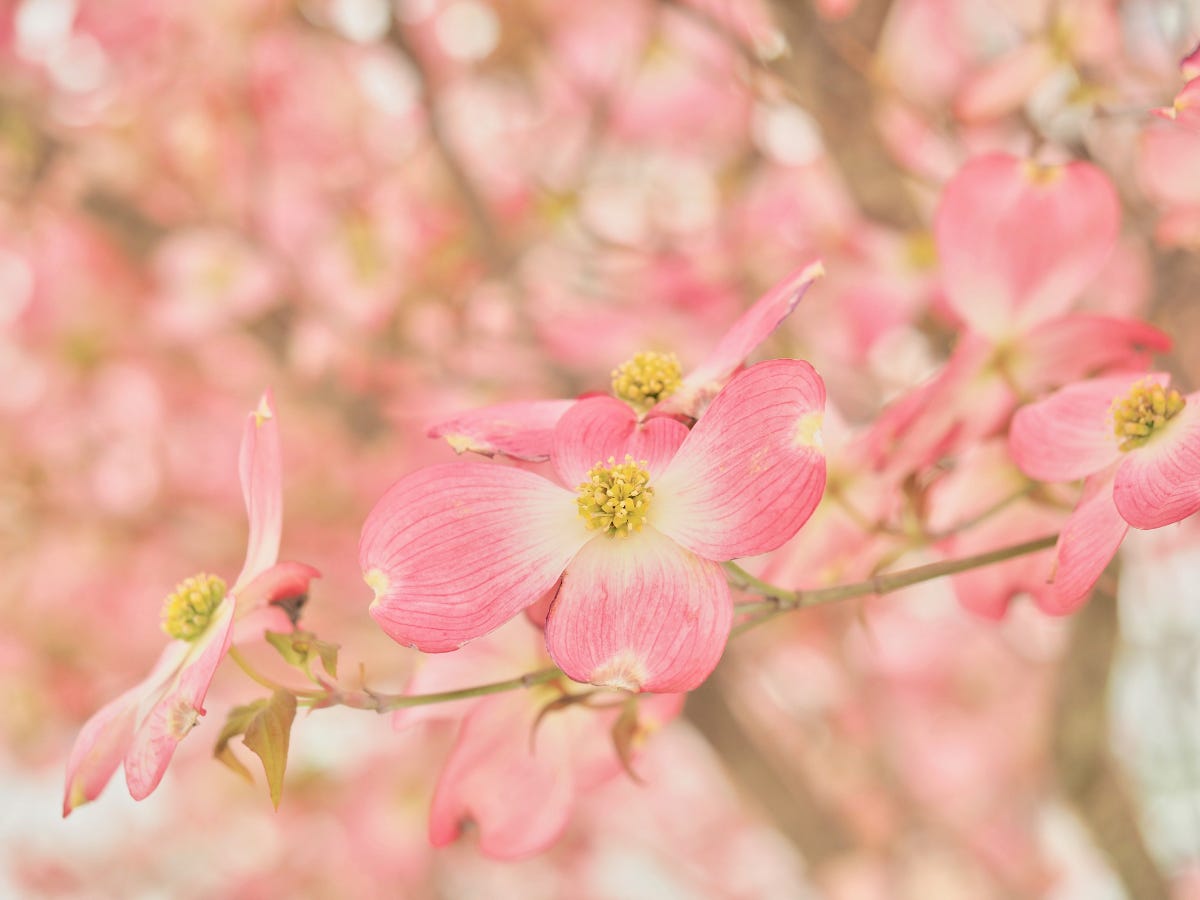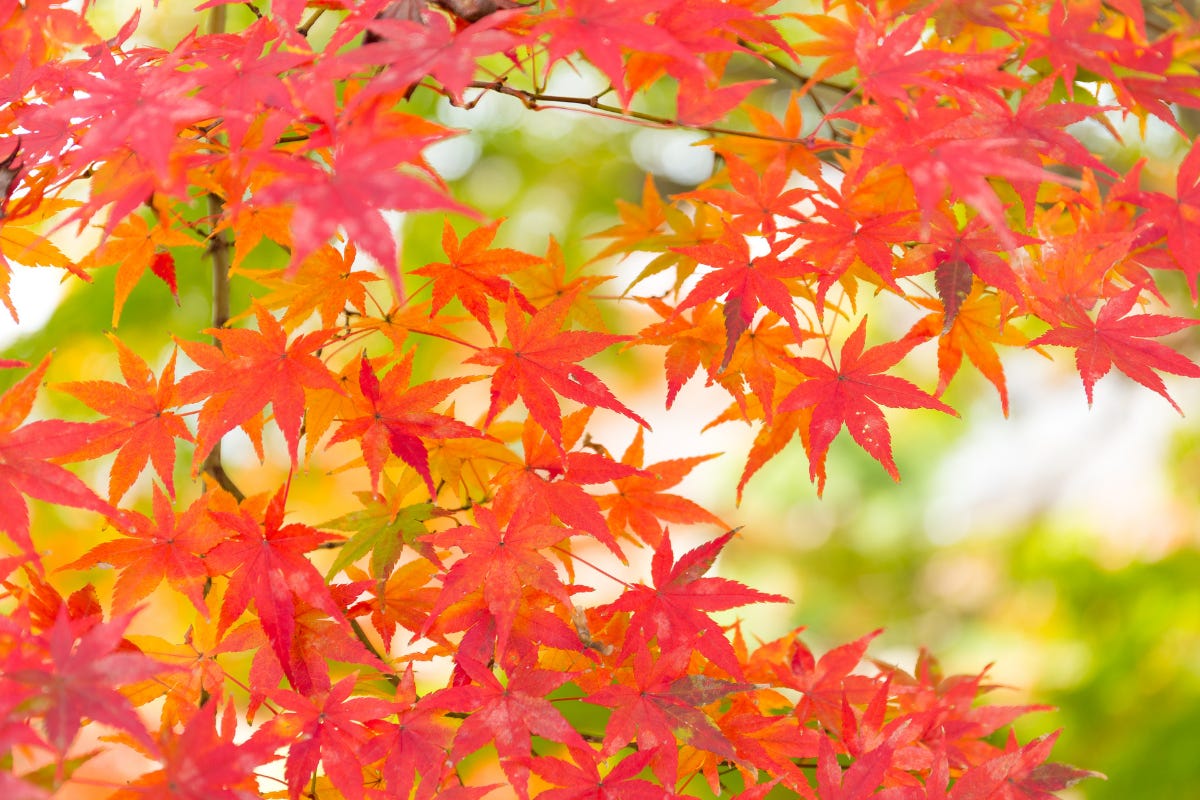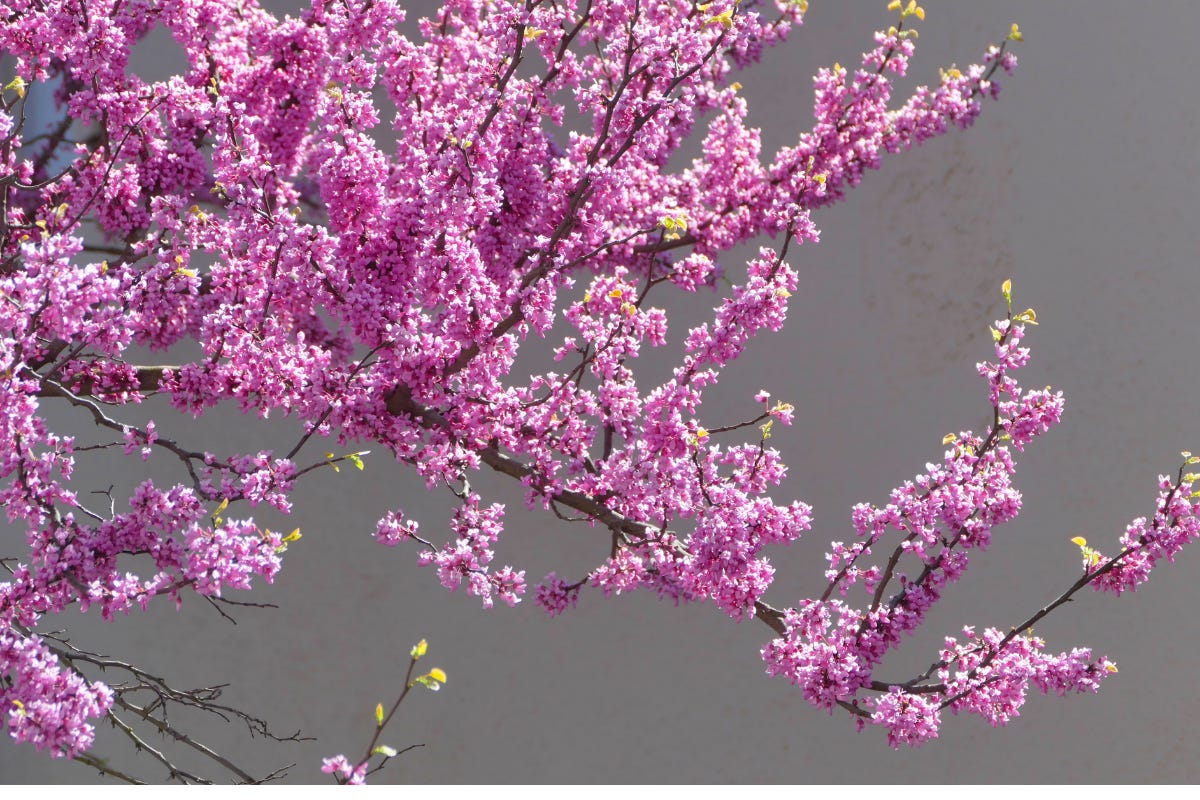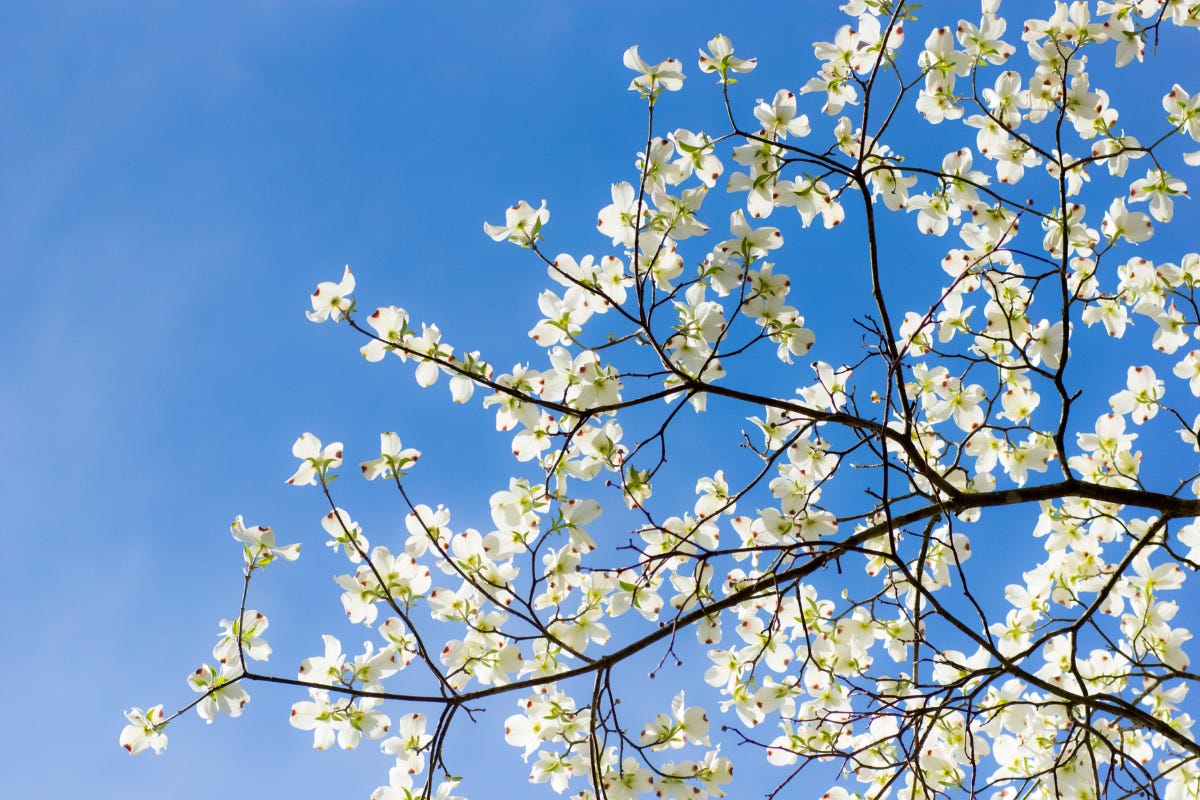"The planting of a tree, especially one of the long-living hardwood trees, is a gift which you can make to posterity at almost no cost and with almost no trouble, and if the tree takes root it will far outlive the visible effect of any of your other actions, good or evil." — George Orwell
Choosing the perfect tree for your yard can be an overwhelming process. With thousands of tree species in the world, and hundreds that live in the northeast, there are a daunting number of options. We will break it down for you over the next few weeks into size categories, starting this week with small trees. Size is one of the most important factors to take into consideration when buying a tree.
Learn more about our ONLINE COURSE Designing Luxurious Gardens and Containers: The Inspired Garden Masterclass.
Planting the wrong-sized tree in the wrong place can be detrimental to the tree and public/ private property. If you have a powerline running through your backyard and decide to plant a mighty red oak underneath it, eventually you will be dealing with a bunch of disgruntled neighbors and PSE&G workers. If you place a tree with a wide canopy too close to your home, it might cause damage to your siding and roof, as well as to the tree. Picking a proper-sized tree is the first step toward creating a beautiful, balanced, and safe landscape.
Small trees are perfect for houses with limited outdoor space and overhead obstructions. They are ideal for owners who want to make a wow statement with their tree choice, as small trees tend to be more ornamental than bigger varieties. Here are our top four picks… and one you should definitely stay away from.
Japanese maples
Japanese maple (Acer palmatum)- Native to Korea, Japan, China, Mongolia and parts of Russia, the Japanese maple is perfectly suited for our sometimes intense New Jersey winters. Hardy, strong, smooth, and vibrant, the Japanese maple is an excellent addition to any landscape or garden. The mature height of this tree generally ranges anywhere from 2-30 feet. The smaller varieties usually have a lovely draping quality similar to a weeping willow, and can be planted close to a house in a front garden bed. Others grow in a straight up pattern with branches that fan out to form cloud-like canopies (picture on left below), and should be planted farther away from a house to give the branches room to spread.
Japanese maples are known for their deep red leaves, but some, like the coral bark Japanese maple (picture on right below) kick it up a notch and put all of their red pigmentation into their branches and boast lime green leaves instead. This is one of showiest of landscape trees and is sure to impress.
Whichever variety you choose, and there are hundreds, be sure to check the tree’s tag for size and sun requirements. Almost all thrive in full sun, with just a few exceptions. Japanese maples can get pricey quickly, especially the smaller varieties, so be sure to check the price tags before ordering.
American redbud
American redbud or eastern redbud (Cercis canadensis)- Hardy and well-suited for the cold northeast climate, the eastern redbud is a breathtaking small tree that grows 20-30 feet high. While it thrives in full sun or part shade, be aware that if planted in full sun it will need to be watered regularly. With an elegant, spreading canopy, heart-shaped leaves, and pink, pea-shaped buds that put on a striking flower display in April (pictured below) this tree can also serve as a good shade tree for small spaces. Spring may be the high point for redbuds, but the rising sun eastern redbud is spectacular in the fall when the outer leaves transform into oranges and yellows and the others remain green, creating an ombre effect.
Dogwood trees
Dogwood trees (Cornus florida)- A classic tree known for its beautiful four-petaled flowers, dogwoods come in both white and pale pink varieties. They bloom for 3-4 weeks in late March, and grow 20-30 feet tall with a spread of 20-30 feet. The trunk of this tree is noticeably different from other trees, boasting a handsome “alligator” pattern of dark gray/brown scales. An added plus for this small tree is the fact that it is native to the northeastern region of the United States, which means it does well in variable soils and seasons. The only soil that should be avoided are very moist soils found in ditches and low lying areas. Dogwoods like full sun, part sun, or part shade, making them a good tree choice for yards with variable lighting conditions.
Magnolia
Sweetbay magnolia (Magnolia virginiana)- The sweetbay magnolia flowers in spring and grows to a height of 10-20 feet with equal spread. The flowers are creamy white, which contrasts well with its dark green glossy leaves. Magnolia blossoms give off a subtle citrusy smell. Magnolia crowns tend to fan out in a sky-filling manner, which makes it a particularly successful shade tree. The sweetbay magnolia does well in full or part sun and thrives in most soils. Young caterpillars eat magnolia leaves for sustenance, and since more caterpillars mean more butterflies, this is a great choice for those looking for small ways to help support pollinators and the environment.
Finally, the one small tree you should avoid at all costs is the Callery pear tree (Pyrus calleryana). Sometimes called Bradford pear, this tree was once considered the perfect choice for producing shady tree-lined streets in the suburbs. Unfortunately, the Callery turned out to be anything but perfect. The structure is prone to breaking, making it especially dangerous in the increasingly intense storms experienced on the east coast. The limbs are heavy, brittle, and destined to fall, causing damage to homes, cars, and worst of all, people. The Callery is awful for biodiversity, as it has become a prolific reproducer and invades many spaces in New Jersey housing native plants. Planting this tree in your yard is a poor choice not only for you, but for the well-being of the ecosystem around you.
Looking forward to spring!
Lucinda
If you would like to read more information on gardens and indoor plants check out our newsletter Get Inspired .
Also check out our website for more garden inspiration www.theinspiredgarden.com .






Leave a comment